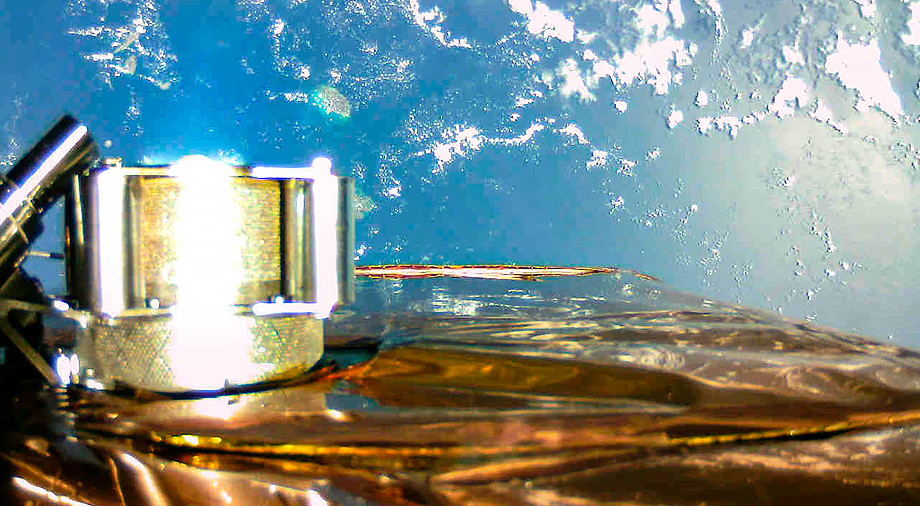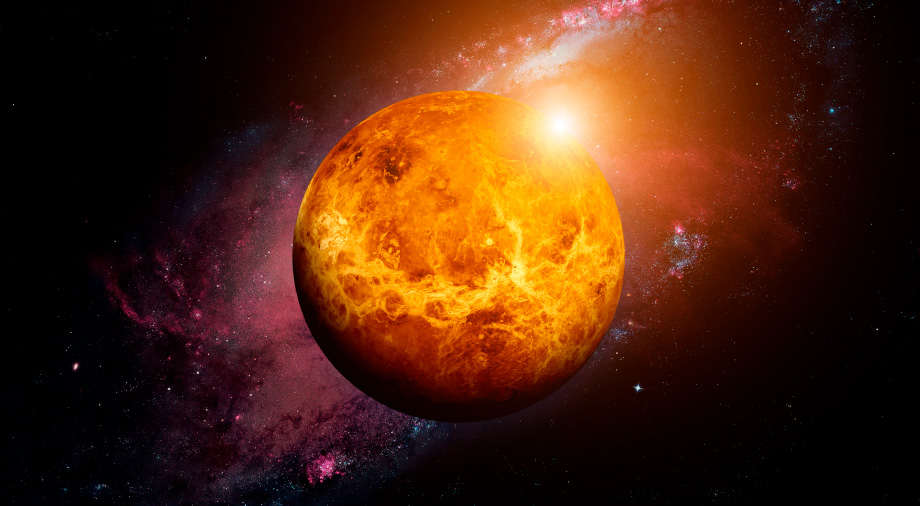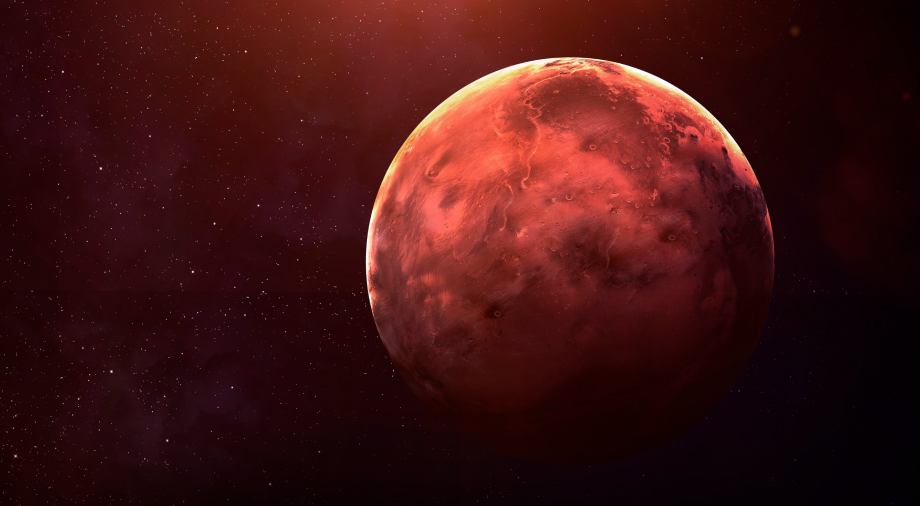The late 1950s was a turbulent time for astronautics. The beginning of the era of manmade satellites and the successful launches of the first animals (monkeys and dogs) into orbit inspired optimism that people would soon not only visit the earth’s orbit, but will also be able to colonize the nearest celestial bodies. The Moon seemed like the best candidate to demonstrate this possibility.
However, the ever-increasing level of confrontation in the Cold War between the USSR and the United States threatened to change the face of future lunar missions. And the first lunar concepts for lunar bases did not have peaceful purposes in mind.
Prerequisites for the emergence of a lunar base
The successful launch of the Soviet Sputnik 1 satellite in 1957 put the US military on alert. The American space program suffered a significant blow to its image. The USSR, which loved to feed its population with utopian stories, announced that the country would mark the 50th anniversary of the Bolshevik Revolution in 1917 with the establishment of a Soviet presence on the Moon. Some people in the Pentagon took these statements more than seriously.
One of them was Lt. General Arthur Trudeau, who was head of the US Army’s research and development (R&D) between 1958 and 1962. His 25 years of service in a special engineering brigade and his experience on the battlefield during the Korean War left Trudeau with no illusions as to the communist threat. Realizing that the USSR already possessed nuclear weapons and rockets to deliver them into space, Trudeau believed that the first confrontations with the Soviets in space were just a matter of time. He decided to take proactive measures.

On June 8, 1959, a 118-page classified document was released on Project Horizon a US Army proposal to establish a lunar military outpost. It was developed by the Army Ballistic Missile Agency (ABMA), an institution with which Lieutenant General Trudeau’s R&D department had close ties. Project Horizon was a multi-year research initiative that ultimately called for the construction of the first lunar military base by mid-1965, and its garrison of 12 astronauts by the end of 1966.
The main goal of the project was to study the possibility of building a lunar outpost, which would become a springboard for scientific research experiments and a guarantee of protecting American interests on the Moon. The Pentagon was seriously considering contingencies in which the Cold War could turn hot, and the possibility of this confrontation expanding into outer space seemed obvious even by the end of the 1950s. Among other things, the Moon could also become an ideal place from which to conduct reconnaissance of Soviet territories without obstruction.
But the first theorists of lunar military conflicts, which included Arthur Trudeau himself, had a rather mundane understanding of how extraterrestrial wars would play out. The number of unknown variables was so great that in the end, everything led to one of the basic wisdom of soldiering – to reach the desired position first and gain a foothold. The whole strategy of the lunar military doctrine was reduced to a race for supremacy in creating a lunar base, because in the event of an open confrontation with the Soviets, it would be possible to shoot down the landing modules of the second power to land on the Moon from its surface.
There was another component which, according to the military, was sure get the project a green light. The ABMA report expressed the hope that there might be deposits of minerals and metals on the Moon, which provided a financial motive to land there first. No one was seriously thinking about delivering these resources back to Earth, but the very presence of a lunar base laid the foundation for developing these ideas in the future.
However, in order to make the idea of a Moon base a reality, the secret ABMA report first proposed solving a number of fundamental engineering problems.
How to deliver 220 tons to the Moon
The lunar outpost proposed by the Horizon Initiative was a monumental project, even by today’s standards. The construction and supply of the base called for the delivery of 150 tons of cargo to the Moon’s surface, which included cylindrical modular blocks. They were planned to be used as a living space for 12 trained astronauts who were to settle at the base. More than 70 tons of cargo were planned to be delivered to the Moon to supply the garrison in the base’s first year of the full operation between December 1966 and December 1967.
To deliver such a colossal amount of cargo into orbit, the Americans planned to use two modifications of the Saturn rocket (Saturn A-1 and Saturn A-2), which were developed by a team of aerospace engineers led by the creator of the first V-2 ballistic missile, Wernher von Braun.
Both rockets consisted of three stages. The first stage of both variants were set to use the Juno V rocket booster, developed by von Braun and German engineer Hermann Kelle. The Saturn A-2 was more powerful in the later stages of flight, as its second stage was powered by four LR79 engines (unlike the Saturn A-1, whose second stage was powered by only two LR79s).
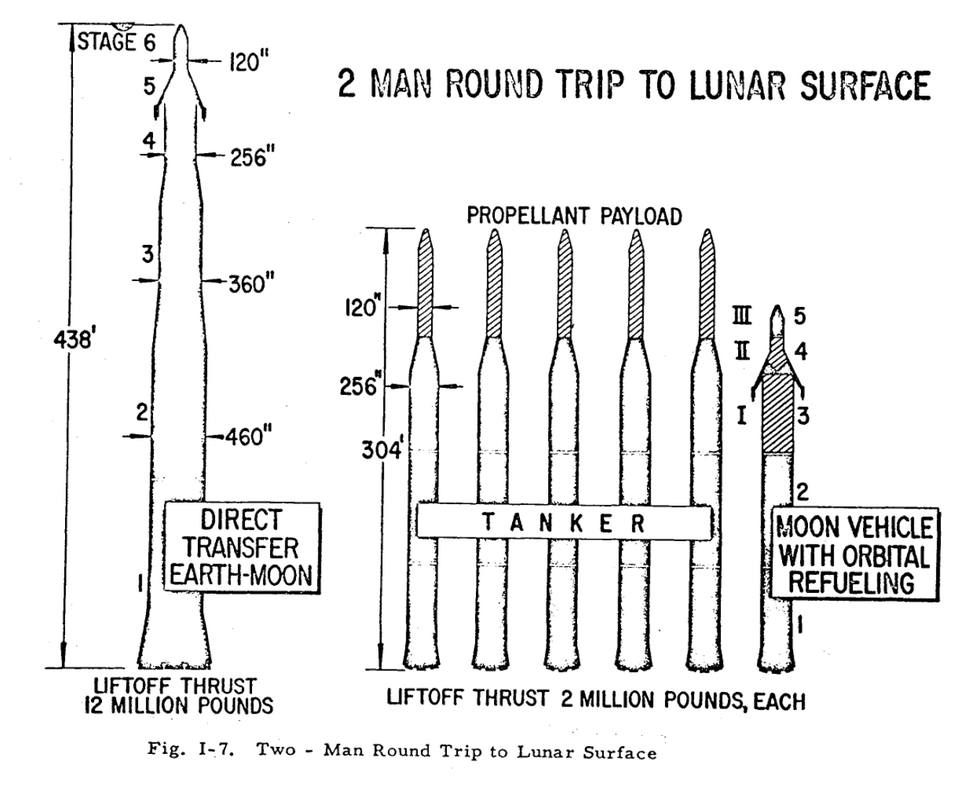
Both modifications of the rocket were supposed to be ready by 1964, so the plan proposed carrying out the first 40 launches before the end of that year. The ABMA report estimated that to build up this rate of launches per year would require about eight launch sites, both inside and outside the US. Of particular interest were the equatorial zones of the Brazilian plateau, since the higher Earth rotation speed at the equator could give the launching rocket additional acceleration. In the organization of these remote cargo-lifting space missions, all nuances were important.
Today, the trajectories along which the Horizon project intended to launch Saturn rockets to the Moon seem unusual. The Americans planned to launch the rockets in a direct trajectory, bypassing a number of orbital maneuvers, since their calculations showed that both the Saturn A-1 and Saturn A-2 would be able to do this.

Launches along a direct trajectory had one significant drawback – they only allowed for the delivery of 2 tons to the Moon at a time, as more numerous and massive loads were doomed to have a hard landing due to the high inertial speed that the rocket developed. The report calculated that in order to build the first lunar base by the end of 1966, 61 Saturn A-1 and 88 Saturn A-2 launches would be needed. In order to implement the plan on time, the US would have to launch 5-6 rockets every month for three years just for the lunar base.
The number of launches was so huge that the draft document suggested another, alternative option: launching cargo into the Earth’s orbit and combining them according to a modular structure, like an orbital station. A tug spacecraft could then take this gigantic structure to the Moon’s orbit, where the blocks would again separate and descend to the Moon’s surface. The idea had potential, but it never went beyond hypothesizing – despite all the complexity, the Pentagon considered using 149 rocket launches to be the more reliable plan.
Landing zone selection
The direct trajectory of the rocket launches which Project Horizon planned to use to send cargo and people to the Moon imposed its own restrictions on where a lunar base could be constructed. The landings were limited to a rather small (by earthly standards) landing square delineated within 20° lunar latitude and 20° lunar longitude (according to the selenographic coordinate system).
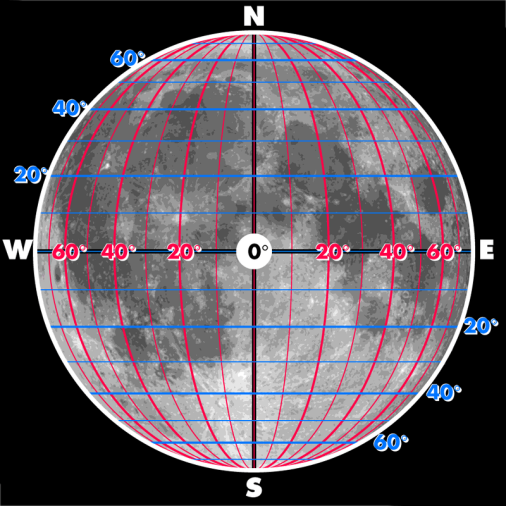
Three zones within in this square were identified as the most favorable places for the construction of a lunar base:
1. The northern part of the Gulf of Tides (12.1°N, 8.3°W) – a location with a 160 km radius to the south of the lunar crater Eratosthenes. The landing was planned in the immediate vicinity of the crater.
2. The southern part Gulf of Tides – a zone located on a flat basalt plateau of solidified lava. Volcanic activity used to take place on the Moon in exactly the same way as the Earth, but the longest period lasted from 3.8 to 3 billion years ago. Today, the basaltic lava is flat and reflects little light, making it an excellent candidate for a landing spot.
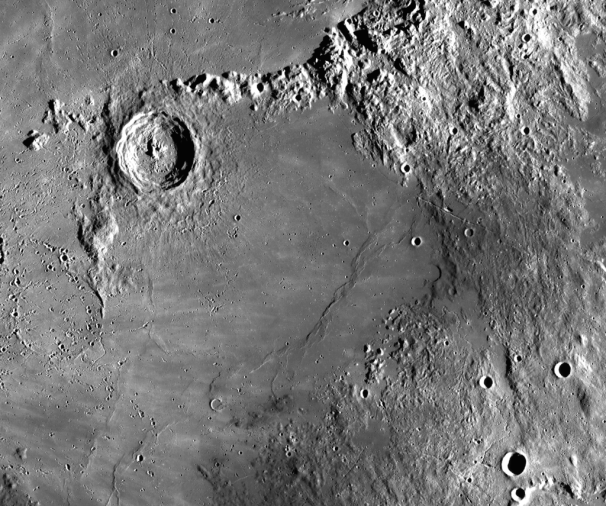
3. The southwestern region of the The Sea of Rains – an even more extensive lava plain, formed after the collision of the Moon with a protoplanet in the late stages of a heavy meteorite bombardment, which the Earth and the Moon underwent about 4 billion years ago. The southwestern region of this volcanic plateau was just within Project Horizon’s designated landing square.
Living caves, nuclear reactors and lettuce
The lunar base was planned to be built from modular cylindrical blocks 6.1 meters long and 3 meters in diameter. They were to be buried in the lunar soil in order to provide the base’s personnel with additional protection from meteorite activity, which is much higher on the Moon than on Earth due to the lack of a full atmosphere. The thick layer of lunar soil was designed to protect personnel from cosmic radiation with extremely high daytime temperatures. Only one airlock would lead to the surface so that the astronauts could leave the base and conduct moonwalks.
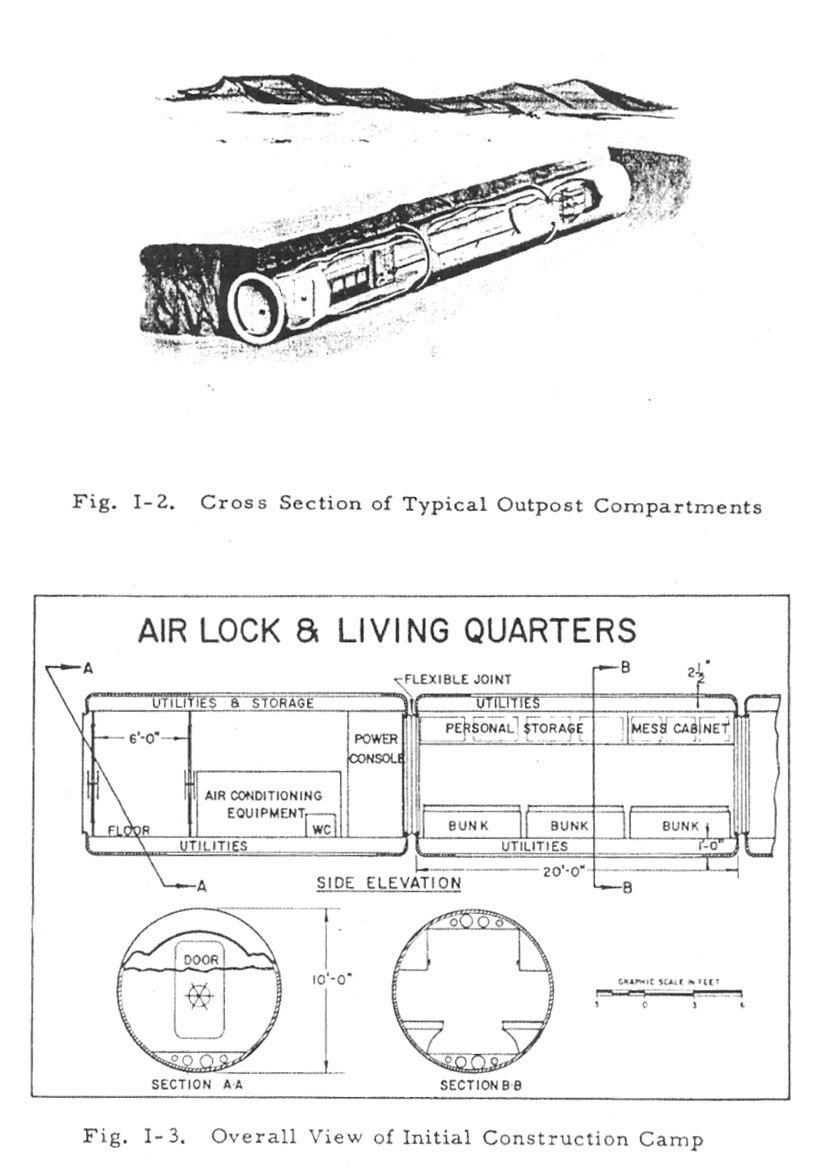
It was assumed that the cylindrical blocks would not only serve as a living space, but would eventually be used to create closed loop vegetative hydroponic systems that would allow astronauts to grow and consume fresh vegetables and lettuce. The planseven provided for a recreation room, although the text of the report did not specify what kind of leisure would be available.
The project also had alternative options for the settlement of astronauts, including the use of natural lunar underground caves as living quarters. All that was needed for the astronauts in this case was to organize a hermetically sealed area of Earth-like air pressure in which people could be without spacesuits.
The base’s power supply was to come from two nuclear reactors (each of which could store ≈60 kW of energy). For safety, they were to be installed in two closed and isolated underground chambers, which would prevent the release of radiation onto the lunar surface in the event of an accident.
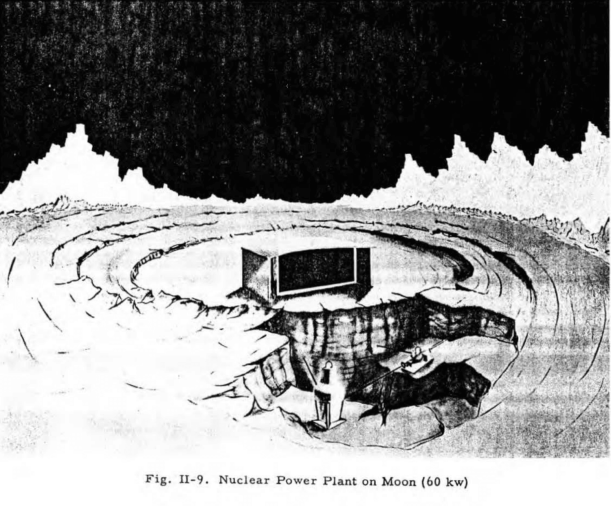
Nuclear reactors were also to be used for powering a construction excavator that would dig holes for housing blocks. The base would also rely on a wheeled lunar rover as the main means of transport for long journeys, research, and search and rescue missions.
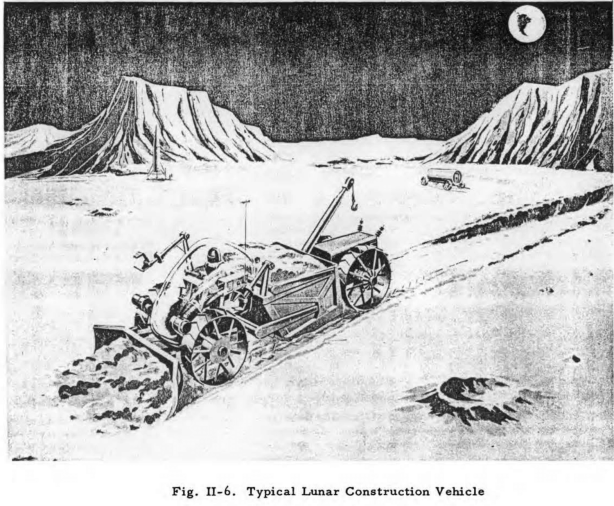
The plan was to use nuclear energy for the base’s power supply, as well as feed the water distillation and oxygen purification systems which were supposed to draw from the lunar environment.
The lunar communications system was to consist of a network of repeater towers located a visible distance from each other, and communication with Earth was to be provided via communication satellites located in lunar orbit (later, the Apollo orbital modules communicated with the Earth in this manner) .
Use was also found for spent fuel tanks from Saturn rockets that delivered cargo. They were to be made into storage facilities.
The Lunar Arsenal
Since Project Horizon was initiated by the military, it also proposed designs for weapons that could be used by base personnel. It is important to understand that in addition to the obvious military component, the AVMA report itself set forth the main objectives of the mission to be research tasks, including the creation and establishment of a Lunar-Earth communication system, medical experiments, and the testing of new types of rockets and equipment.
Given that the tasks necessary for maintaining the base would require its personnel to have skills far beyond mere military knowledge, professional soldiers were not considered as candidates for the lunar garrison. On the contrary, engineers, doctors and scientists were supposed to be taught the basics of military tactics, as well as to learn how to handle specific weapons that were designed specifically for the Horizon base.
The bulky suits for lunar travel did not allow the use of aimed weapons like machine guns or rifles. In addition, standard bullets and rifled barrels would not work in the thin lunar atmosphere. Instead, station personnel were to be offered shotgun-like weapons, which could guarantee a significant spread of fragments without the need for aimed fire. On the Moon’s surface, even millimeter-sized pellets threatened death if an adversary’s spacesuit was pierced.
Some types of terrestrial weapons were also rethought. M18A1 Claymore directional anti-personnel mines, developed in the early 1950s, were planned to be modified for use on the Moon. They were supposed to be both installed along the perimeter of the base and used in modifications for melee weapons.
A mine fuse stuffed with tiny shrapnel was to be fixed on a hollow pole with an electric placed inside. The cable was connected to a battery installed on the astronaut’s space suit. The pole, which had a fuse fixed to the end, was supposed to completely dampen the vibrations from the explosion, and the protective shield was to guarantee additional safety to the wielder of the weapon.
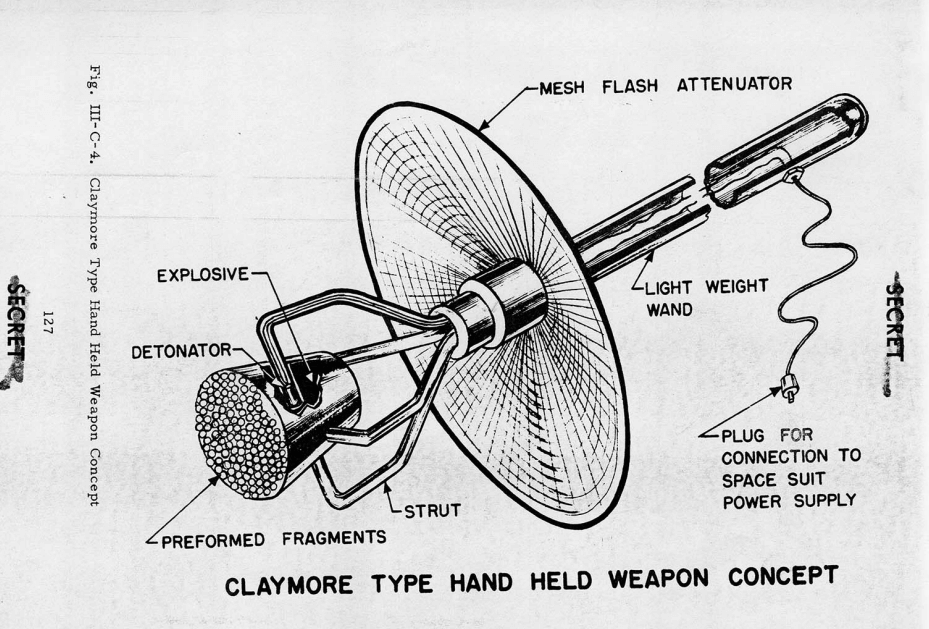
The weak lunar gravity made these handheld weapons truly deadly. The scattering of shrapnel ensured lethality at distances over 700 m (compared to barely over 50 m for M18A1 mines on Earth).
Project Horizon concept also considered the use of hand-held and stationary single-shot rocket launchers, which could be useful for knocking down enemy landing platforms. However, the most foreboding possibility was the idea of delivering and placing weapons of mass destruction on the Moon.
A littered horizon: why was the project halted?
The Project Horizon proposal took on a great many challenges all at once. The American space industry had never faced anything comparable to what the ABMA report proposed to take on all at once.
Eight and a half years of designing, launching, and maintaining the base would require an astronomical amount of $6 billion ($58 billion at current prices) from the US budget. However, this estimated amount was actually a significant underestimate when it came to the possible launch of 149 rockets over a three-year period.
But it was not money that turned out to be the main factor that stopped Project Horizon from coming to fruition. Instead, it was the emergence of a new, more peaceful diplomacy. The first fruits of this shift were visible in the Partial Test Ban Treaty of 1963, which forbade the deployment of weapons of mass destruction into orbit. Later, the ideas of a military base on the Moon were completely ruled out under Outer Space Treaty (OST) signed in 1967 by both the USSR and the US. The treaty categorically forbade the use of the Moon for anything other than peaceful purposes.
As much as the American military would have liked to be the first to organize a militarized foothold on the Moon, its skills were called for in other places. While communism had not yet reached the Moon, it was feeling very comfortable in Southeast Asia.
The Horizon project was, and remains, a truly monumental US initiative that more than anything else demonstrated the degree of confrontation between the two superpowers at the end of the first decade of the war that was as cold as the cosmos.


